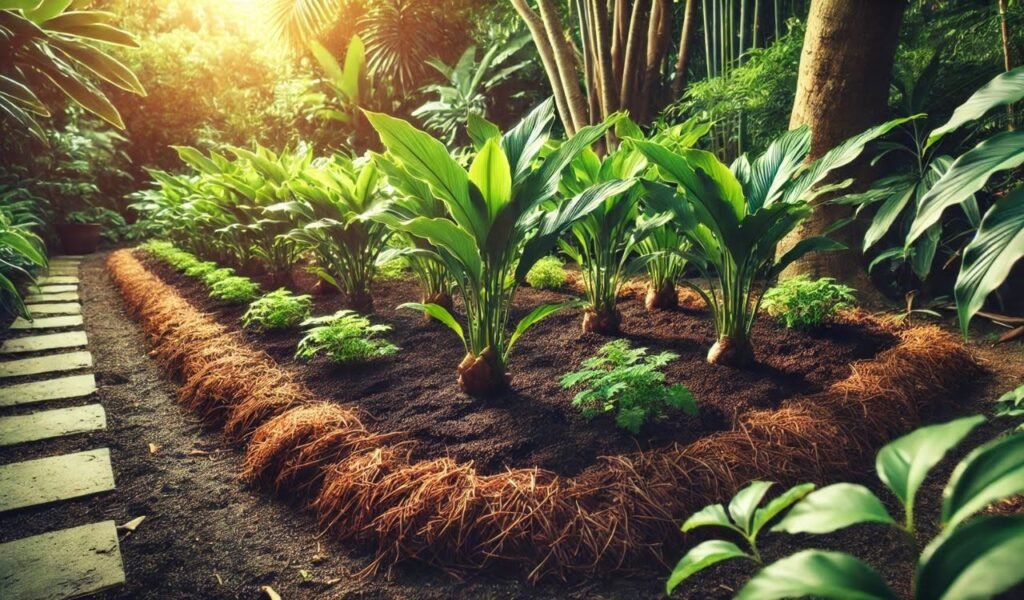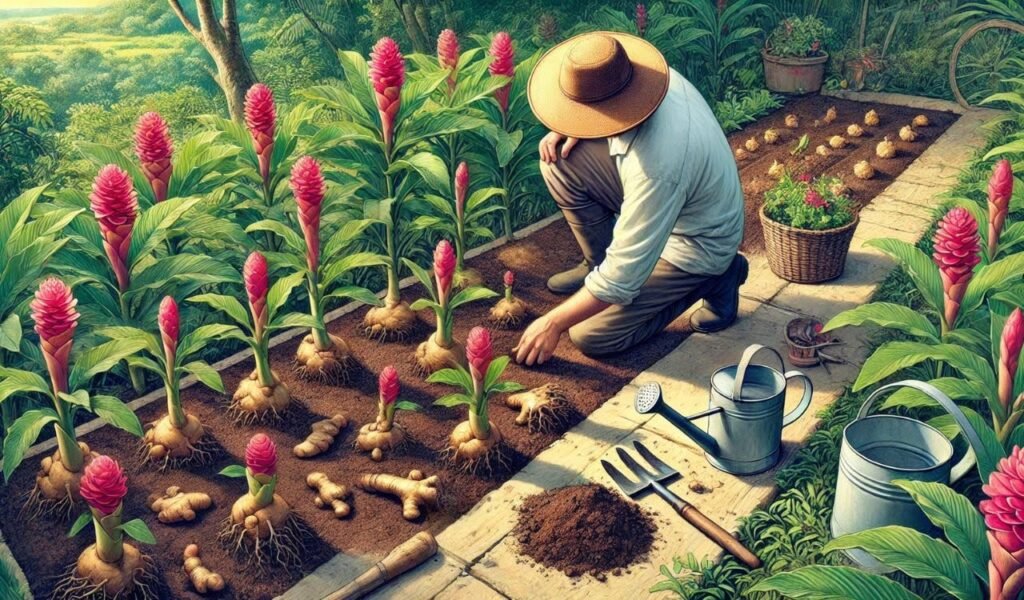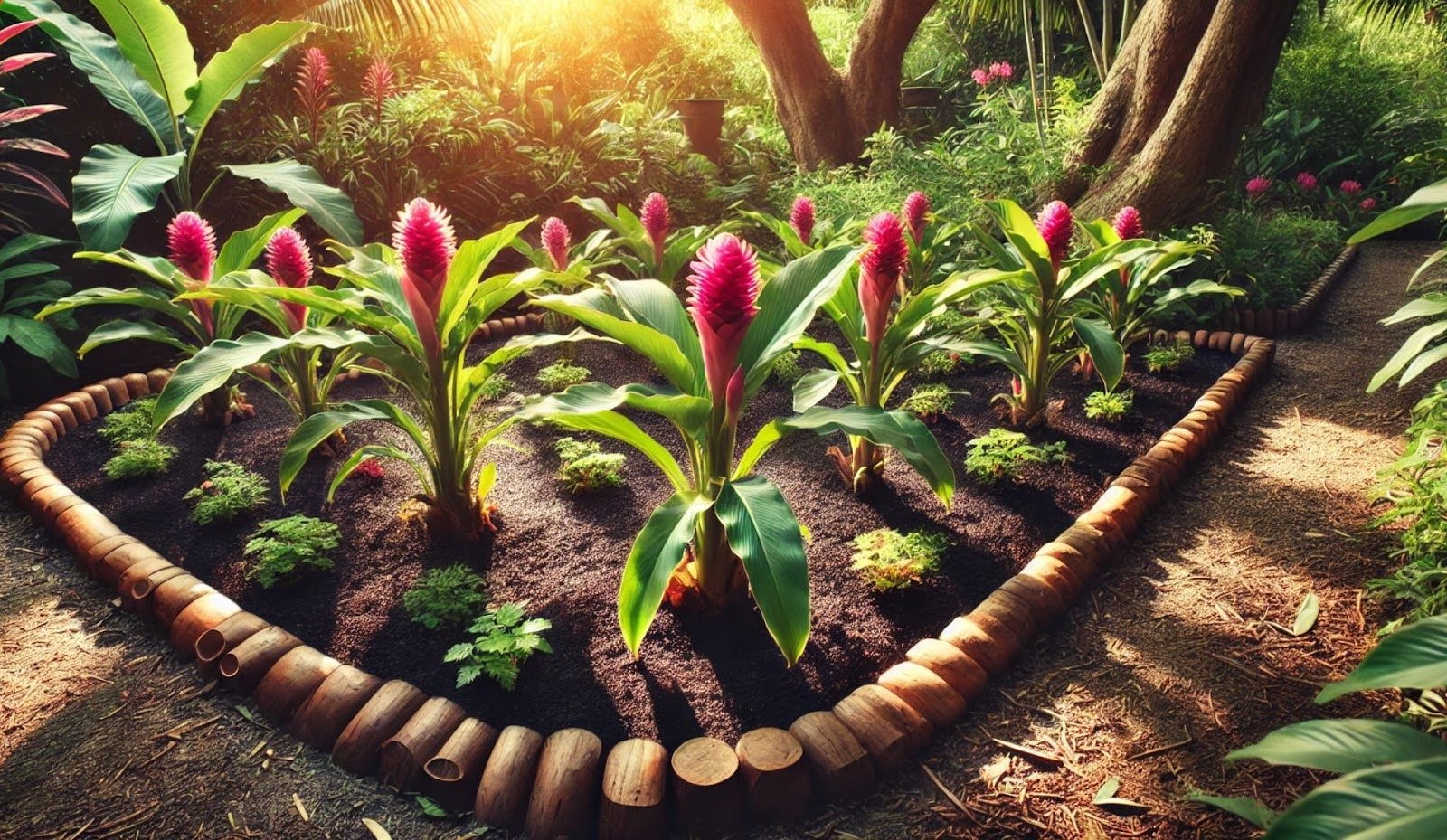Ginger Plant Flower Care Tips for Beginners
Ginger plant flower might sound like a gardening myth, but it’s the real tropical deal. Tucked beneath all that leafy green is a bloom most folks never see. It’s bold, strange, and totally underrated. Growing one indoors? It’s possible—and actually not that hard. The trick is knowing what makes it tick. Stick with this guide, and you’ll be on your way to spotting your own ginger flower surprise.
Discovering the Ginger Plant Flower
If you’ve never seen a ginger plant flower before, you might be surprised to learn they exist at all. In culinary ginger (Zingiber officinale), the flowers are modest—small, yellow-green in color, and often hidden beneath the foliage. They bloom on separate stems that shoot up from the rhizome, leafless and elegant in their own quiet way. They’re not flashy, but they have a subtle, exotic charm that hints at the plant’s tropical roots.
However, there’s a whole other side to ginger—the ornamental kind. These varieties don’t just flower; they put on a full show. With vivid colors, intricate shapes, and sometimes massive blooms, ornamental gingers like torch ginger, shell ginger, and beehive ginger are grown almost exclusively for their stunning flowers. And unlike the subtle blossoms of edible ginger, these ones are anything but shy.
More Than Just Ginger Root: Meet the Ornamental Stars
Among the many types of ginger plants, a few stand out for their striking blooms. One of the most breathtaking is the torch ginger plant, especially the vibrant orange variety. Native to Southeast Asia, this plant can grow tall and proud, producing flowers that look like flaming torches—hence the name. The blossoms are often used in Malaysian and Thai cuisine, but even if you never cook with them, they’re mesmerizing to look at.
Another stunning variety is beehive ginger, which grows flowers that genuinely look like little honeycombs, often in rich shades of yellow, orange, and red. They start off tight and compact, then slowly expand into a fascinating structure that can last for weeks. These flowers are commonly used in tropical flower arrangements because of their longevity and bold texture.
Then there’s shell ginger, with its soft, pink blossoms that resemble sea shells. The flowers have a gentle, elegant beauty, and the plant’s variegated leaves are equally gorgeous. It’s one of those plants that’s as lovely as it is useful—its leaves are sometimes used for wrapping food in Asian cuisine, and they also release a light, gingery scent when brushed against.
Even wild ginger plants, though less dramatic, hold their own. Native to North America, they aren’t related to the culinary variety, but it grows low to the ground in shady woodlands, producing small, purplish-brown flowers that you really have to search for. They’re like nature’s little secrets, tucked beneath heart-shaped leaves, quietly thriving in the shadows.
Creating the Right Environment for Ginger Plants to Thrive

Growing ginger, whether for its root or its flowers, is all about recreating the warm, humid conditions of the tropics. That’s where it thrives naturally, so the closer you can get to that environment, the better your chances of success—especially if you’re hoping to see it bloom.
Ginger loves heat, ideally between 70 to 90°F (21 to 32°C). It needs moist but well-draining soil and prefers filtered sunlight or partial shade. Think of how it might grow on the forest floor in Southeast Asia—protected from direct sun but still warm and bright. That’s the vibe you’re aiming for in your backyard or home.
If you’re growing it indoors, try placing the plant near a window where it gets plenty of indirect light. Avoid cold drafts or air conditioning vents, and make sure the soil never stays soggy. Too much water can quickly lead to root rot, especially in containers. You want the soil to be moist like a wrung-out sponge—not soaking wet.
Another key factor, especially when you’re aiming for flowers, is humidity. Ginger plants love it. If your home is dry, especially in the winter, consider using a humidifier nearby or setting the pot on a tray of pebbles and water to boost the moisture around the plant.
How to Make Your Ginger Plant Bloom
Now, here’s the golden question: how do you actually get a ginger plant to flower?
The answer isn’t always straightforward because not all ginger plants will flower easily, especially indoors. Most edible ginger plants need at least two years of growth before they start to think about blooming. That means patience is crucial. You can’t rush a ginger plant—it’s got to mature at its own pace. If you’re growing ornamental varieties like torch ginger, your odds are better, but they still need the right care.
You’ll want to provide consistent watering, high humidity, and regular feeding during the growing season. A balanced fertilizer every month can help, especially one that promotes blooms. But even with all the right conditions, some plants may not flower until they’re truly ready.
One of the most common reasons for lack of flowering is light—too much direct sun can burn the plant, but too little will prevent it from producing blooms. Try experimenting with filtered light or dappled sun and see how your plant responds.
Why Grow Ginger Plant Flowers?
So, let’s say you’re not planning on harvesting ginger root for cooking—why would you still grow the plant?
For starters, the flowers are absolutely worth it. If you’ve ever seen a torch ginger in full bloom, you’ll know exactly what I mean. These plants are like tropical fireworks, bursting with color and personality. They make amazing additions to floral arrangements and can even become the centerpiece of your indoor jungle.
Beyond aesthetics, ginger flowers are surprisingly practical too. Some varieties, like torch ginger, have edible flower buds that add flavor to traditional dishes. They’re citrusy, slightly spicy, and bring a unique zing that you won’t get from the root alone.
Ginger flowers also attract pollinators like bees, butterflies, and hummingbirds—so if you’re growing them outdoors, they can help boost biodiversity in your garden. And let’s not forget the cultural value. In many parts of the world, ginger flowers are used in ceremonies, offerings, and traditional medicine.
Propagating Flowering Ginger

Propagating flowering ginger is surprisingly simple and really rewarding. Whether you’re starting with a store-bought rhizome or dividing a mature plant, all it takes is a bit of patience and the right conditions. If you’re using fresh ginger, look for pieces with small buds or “eyes,” cut them into sections, let them dry for a day or two, then plant them in well-draining soil with the buds facing up.
Keep the soil moist and the environment warm—ginger loves indirect sunlight and a bit of humidity. If you’re working with an established plant, gently dig it up, break off a few healthy rhizome sections with roots, and replant them. The process is easy, but flowering takes time—sometimes up to two or three years. Stay consistent, and eventually, you’ll be rewarded with lush leaves and those beautiful, exotic blooms.
When Your Ginger Blooms: What to Do Next
If you’re lucky enough to get your ginger plant to flower, make the most of it. Cut the flower early in the morning when it’s at its freshest, and use a clean pair of scissors or shears. You can display the blooms in a vase, where they’ll last for days or even weeks, especially the thicker, waxy varieties like torch or beehive ginger.
You can also leave the flower on the plant to enjoy it in its natural setting. Some ornamental gingers produce blooms that persist for a long time, slowly changing color or form as they age. Others can be dried and used in crafts, potpourri, or preserved arrangements. For culinary uses, torch ginger buds are typically harvested while still young and tender. Slice them thin and toss them into salads or soups for a bright, tangy kick.
Orange Torch Ginger Plant
The orange torch ginger plant (scientifically known as Etlingera elatior) is a striking tropical perennial renowned for its vibrant, torch-like flower heads and lush, tall foliage. Native to Southeast Asia, this plant thrives in warm, humid climates and is often used in ornamental gardens for its dramatic visual appeal. Its fiery orange blooms rise majestically from long, leafy stalks, resembling torches—hence the name.
Aside from its aesthetic charm, the plant is also valued in some cultures for culinary and medicinal uses, with its flower buds and shoots commonly featured in traditional dishes. Flourishing best in moist, well-drained soil and partial shade, the orange torch ginger adds a bold, exotic flair to any landscape.
FAQ
What is a ginger plant flower?
It’s the bloom that grows from ginger plants, often hidden but beautiful.
Can ginger plants flower indoors?
Yes, with enough warmth, humidity, and care, they can bloom indoors.
How long does it take for ginger to flower?
Usually 1 to 3 years, depending on the type and growing conditions.
Are ginger plant flowers edible?
Some are! Especially torch ginger flowers, which are used in cooking.
Why won’t my ginger plant flower?
It might need more time, light, humidity, or proper feeding.
Final Thoughts
In the end, the ginger plant flower is one of those small garden wonders that often goes unnoticed—but once you see it bloom, you’ll never look at ginger the same way again. Whether you’re growing edible ginger in a pot on your kitchen counter or tending a backyard full of exotic ornamentals, the moment your plant flowers feels like a little bit of magic. Sure, it takes some time and care, and maybe a bit of trial and error, but that’s the beauty of gardening, right?
It’s not just about results—it’s about the joy of growing, the surprise of discovery, and the connection you build with the plants around you. So if you’ve got a ginger rhizome tucked into some soil right now, keep nurturing it. You never know when it might surprise you with a flower—and when it does, you’ll realize just how much this spicy little plant has to offer, above and below the soil.







